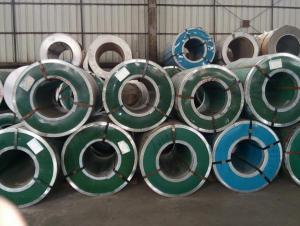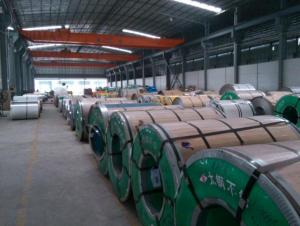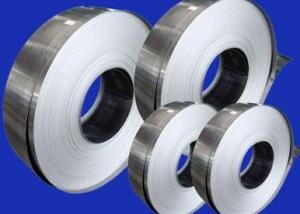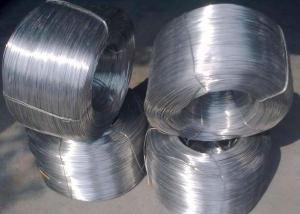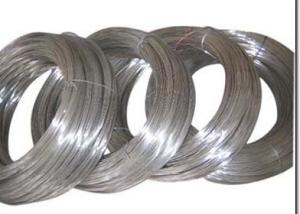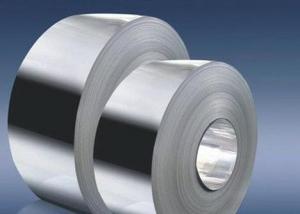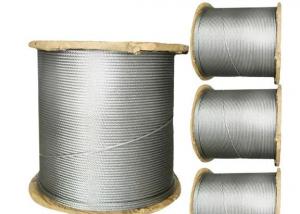Best Quality for Stainless Steel Coil
- Loading Port:
- China Main Port
- Payment Terms:
- TT or LC
- Min Order Qty:
- 1 Ton m.t.
- Supply Capability:
- 30000ton per month m.t./month
OKorder Service Pledge
OKorder Financial Service
You Might Also Like
AISI 304 Stainless Steel Coil
1. Chemical Composition
C | Si | Mn | P | S | Ni | Cr |
max0.08 | max1.00 | max2.00 | max0.045 | max0.03 | 8.00-10.50 | 18.00-20.00 |
2. Mechanical Properties
Yield Strength | Tensile | Elongation | Hardness (HV) | Hardness (HRB) |
≥ 205 | ≥ 520 | ≥ 40 | ≤ 200 | ≤ 90 |
3. Standard: AISI, ASTM, GB, EN, DIN, JIS
4. Surface: 2B, NO.1, BA, NO.4, Hairline, SB, Mirror finish, Anti-skid, Cherkered etc.
5. Size:
Thickness: 0.3-3mm (cold rolled), 3-40mm (hot rolled)
Width: 1000mm or 1219mm or 1240mm for cold rolled, 1500mm for hot rolled.
Length: As customers' request.
6. MOQ: 1 Ton
7. Payment terms: T/T or L/C
8. Packing: Seaworthy package with wooden or Iron pallets with the paper and the steel strip, or as customers' request.
9. Delivery time: Usually about 7 days after we confirming the order, or according to your quantity.
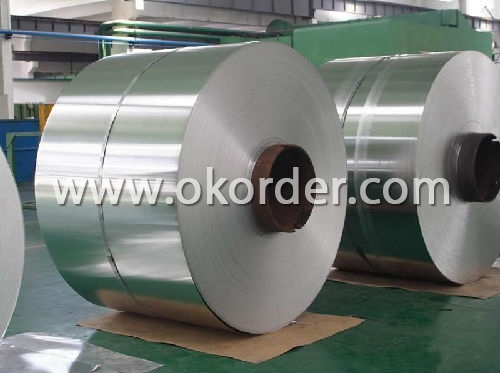

- Q:Can stainless steel wire be used for making wire forms?
- Yes, stainless steel wire can be used for making wire forms. Stainless steel wire is known for its strength, durability, and resistance to corrosion, making it a popular choice for various applications. It can be easily bent, shaped, and manipulated into different forms and structures, making it ideal for creating wire forms such as sculptures, jewelry, and industrial components. Additionally, stainless steel wire offers a sleek and polished look, making it an attractive material for decorative and aesthetic purposes.
- Q:Is stainless steel wire resistant to wear and tear?
- Yes, stainless steel wire is highly resistant to wear and tear. It is known for its durability and strength, making it suitable for various applications where it may be subjected to frequent use, stress, or environmental factors that could cause wear and tear.
- Q:The use of stainless steel side silk
- Yes, you can, but you can't do it yourself. You can only send it back to the manufacturer
- Q:What is the difference between stainless steel taps and ordinary taps?
- The quality of stainless steel taps is different from that of ordinary taps, and special taps usually have coatings (such as TiN, etc.).
- Q:Can stainless steel wire be used for high-temperature applications?
- Stainless steel wire has the ability to be utilized in high-temperature situations. Stainless steel possesses remarkable heat resistance properties, making it appropriate for deployment in environments with elevated temperatures. The substantial quantities of chromium within stainless steel wire establish a protective layer of oxide on the surface, thereby preventing oxidation and corrosion when subjected to high temperatures. This oxide layer functions as a barrier, ensuring that stainless steel wire retains its mechanical characteristics and withstands deformation even in exceedingly hot conditions. Furthermore, stainless steel wire demonstrates commendable thermal conductivity, enabling it to endure high temperatures without compromising its structural integrity. Consequently, stainless steel wire is extensively employed in various high-temperature applications, including heating elements, furnace components, exhaust systems, and aerospace equipment.
- Q:What are the different wire surface passivation options available for stainless steel wire?
- There are several wire surface passivation options available for stainless steel wire, each with its own advantages and applications. Some of the common passivation methods include: 1. Chemical Passivation: This involves the use of acid-based solutions to remove impurities and create a passive oxide layer on the wire surface. It helps in preventing corrosion and improving the wire's resistance to environmental factors. 2. Electrochemical Passivation: This method uses an electrochemical process to remove iron from the stainless steel surface, thereby promoting the formation of a chromium-rich oxide layer. It provides enhanced corrosion resistance and improves the wire's appearance. 3. Mechanical Passivation: Also known as abrasive passivation, this technique involves the use of abrasive materials or mechanical means to remove contaminants from the wire's surface. It helps in improving the wire's cleanliness and prepares it for subsequent passivation processes. 4. Nitric Acid Passivation: Nitric acid passivation is a widely used method that involves the application of nitric acid solution to the stainless steel wire surface. It helps in removing free iron and other impurities, promoting the formation of a passive oxide layer. 5. Citric Acid Passivation: This passivation method utilizes citric acid-based solutions to remove contaminants from the stainless steel wire surface. It is considered more environmentally friendly compared to nitric acid passivation and provides similar corrosion resistance properties. 6. Pickling: Pickling is a passivation method that involves immersing the stainless steel wire in an acid solution, typically a mixture of nitric and hydrofluoric acid. It removes scale, oxide layers, and other impurities, resulting in a clean and corrosion-resistant wire surface. The choice of passivation method depends on various factors such as the desired level of corrosion resistance, environmental considerations, and application requirements. It is essential to consult with experts or industry professionals to determine the most suitable passivation option for a specific stainless steel wire application.
- Q:Is stainless steel wire suitable for wire rope balustrades?
- Yes, stainless steel wire is suitable for wire rope balustrades. Stainless steel wire is known for its high strength and durability, making it an excellent choice for balustrades that require a strong and secure support system. It is also resistant to corrosion, which is essential for outdoor or coastal environments where the balustrades may be exposed to moisture and salt air. Additionally, stainless steel wire has a sleek and modern appearance, adding to the aesthetic appeal of the balustrades. Overall, stainless steel wire is a reliable and stylish option for wire rope balustrades.
- Q:Is stainless steel wire suitable for wire EDM applications?
- Yes, stainless steel wire is suitable for wire EDM (Electrical Discharge Machining) applications. Wire EDM is a precision machining process that utilizes a thin wire to cut through a workpiece using electrical discharges. Stainless steel wire is commonly used in wire EDM due to its excellent electrical conductivity, high tensile strength, and resistance to corrosion. These properties make it ideal for cutting a wide range of materials, including metals, alloys, and even conductive ceramics. Additionally, stainless steel wire offers good thermal stability and can withstand the high temperatures generated during the EDM process. Overall, stainless steel wire is a reliable and effective choice for wire EDM applications.
- Q:What are the different types of stainless steel wire braids?
- There are several different types of stainless steel wire braids that are commonly used in various industries. These include: 1. Standard braids: These are the most common type of stainless steel wire braids and are typically made from AISI 304 or AISI 316 stainless steel. They offer good flexibility and resistance to corrosion, making them suitable for a wide range of applications. 2. High-tensile braids: These braids are made from stainless steel alloys with higher tensile strength, such as AISI 302 or AISI 321. They are specifically designed for applications that require extra strength and durability, such as heavy machinery or high-pressure systems. 3. Ultra-flexible braids: As the name suggests, these braids are extremely flexible and are often used in applications where flexibility and maneuverability are crucial, such as in medical devices or robotics. They are typically made from AISI 316L stainless steel, which offers excellent corrosion resistance and biocompatibility. 4. Coated braids: Some stainless steel wire braids are coated with a layer of polymer or silicone material to provide additional protection against abrasion or chemicals. These coatings can also enhance the appearance of the braids and make them more comfortable to handle. 5. Flat braids: Unlike traditional round braids, flat braids have a flattened profile. They are commonly used in applications that require a low profile or when space is limited. Flat braids can be made from various stainless steel alloys, depending on the specific requirements of the application. Overall, the different types of stainless steel wire braids offer a wide range of properties and characteristics to meet the diverse needs of different industries. Selecting the right type of braid depends on factors such as the application requirements, environment, and desired performance characteristics.
- Q:Can stainless steel wire be used for wire rope applications?
- Yes, stainless steel wire can be used for wire rope applications. Stainless steel wire ropes offer excellent corrosion resistance, high strength, and durability, making them suitable for various industries including marine, construction, and mining. They are particularly useful in environments where moisture, chemicals, or extreme temperatures may cause rust or degradation in other types of wire ropes.
1. Manufacturer Overview |
|
|---|---|
| Location | Zhejiang,China |
| Year Established | 2000 |
| Annual Output Value | Above US$8.3 Million |
| Main Markets | Europe, America |
| Company Certifications | ISO9001:2000 |
2. Manufacturer Certificates |
|
|---|---|
| a) Certification Name | |
| Range | |
| Reference | |
| Validity Period | |
3. Manufacturer Capability |
|
|---|---|
| a)Trade Capacity | |
| Nearest Port | Shanghai |
| Export Percentage | 30% |
| No.of Employees in Trade Department | 30 People |
| Language Spoken: | English;Chinese |
| b)Factory Information | |
| Factory Size: | Above 80,000 square meters |
| No. of Production Lines | Above 7 |
| Contract Manufacturing | OEM Service Offered;Design Service Offered |
| Product Price Range | Average |
Send your message to us
Best Quality for Stainless Steel Coil
- Loading Port:
- China Main Port
- Payment Terms:
- TT or LC
- Min Order Qty:
- 1 Ton m.t.
- Supply Capability:
- 30000ton per month m.t./month
OKorder Service Pledge
OKorder Financial Service
Similar products
New products
Hot products
Related keywords

